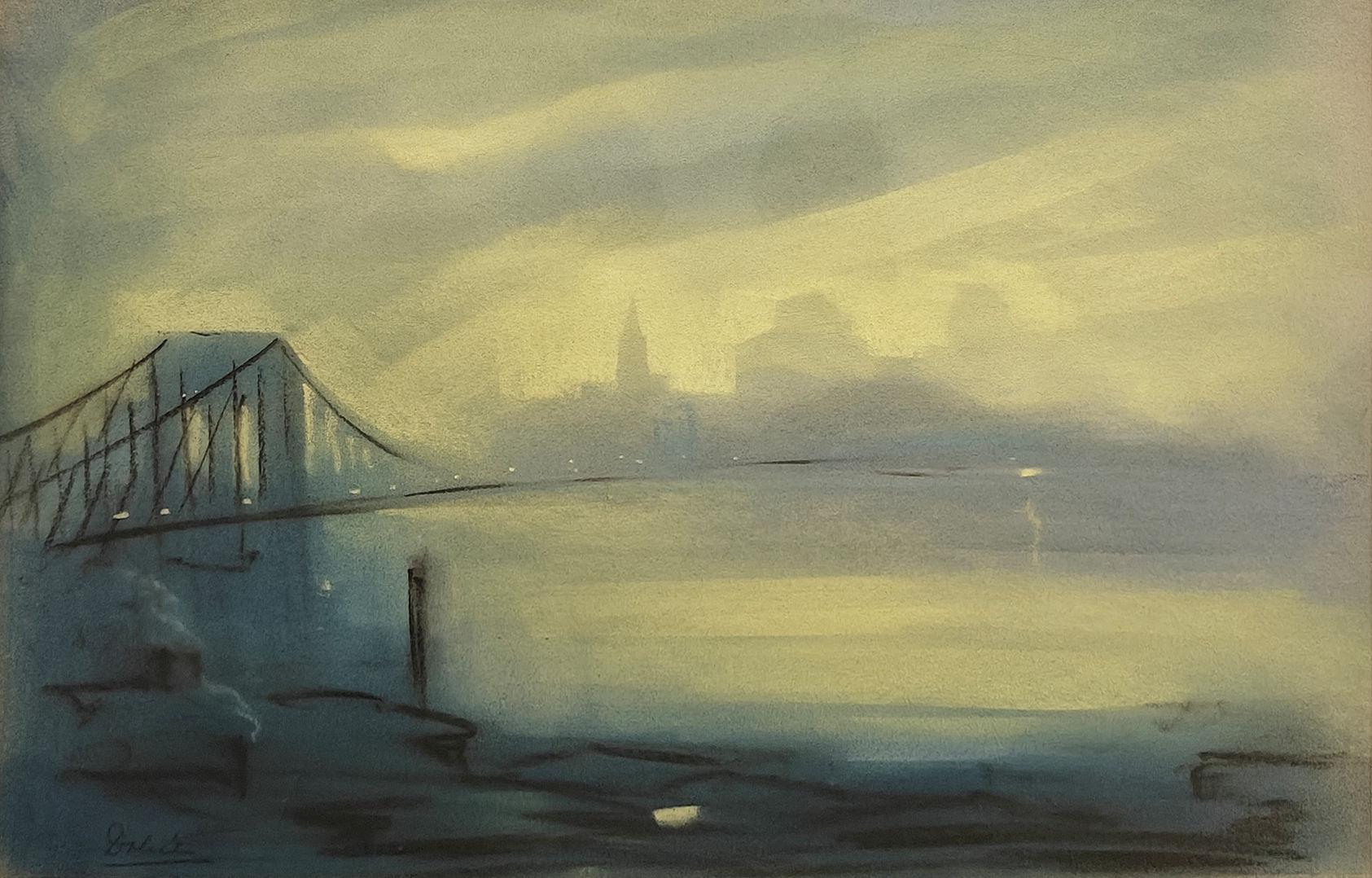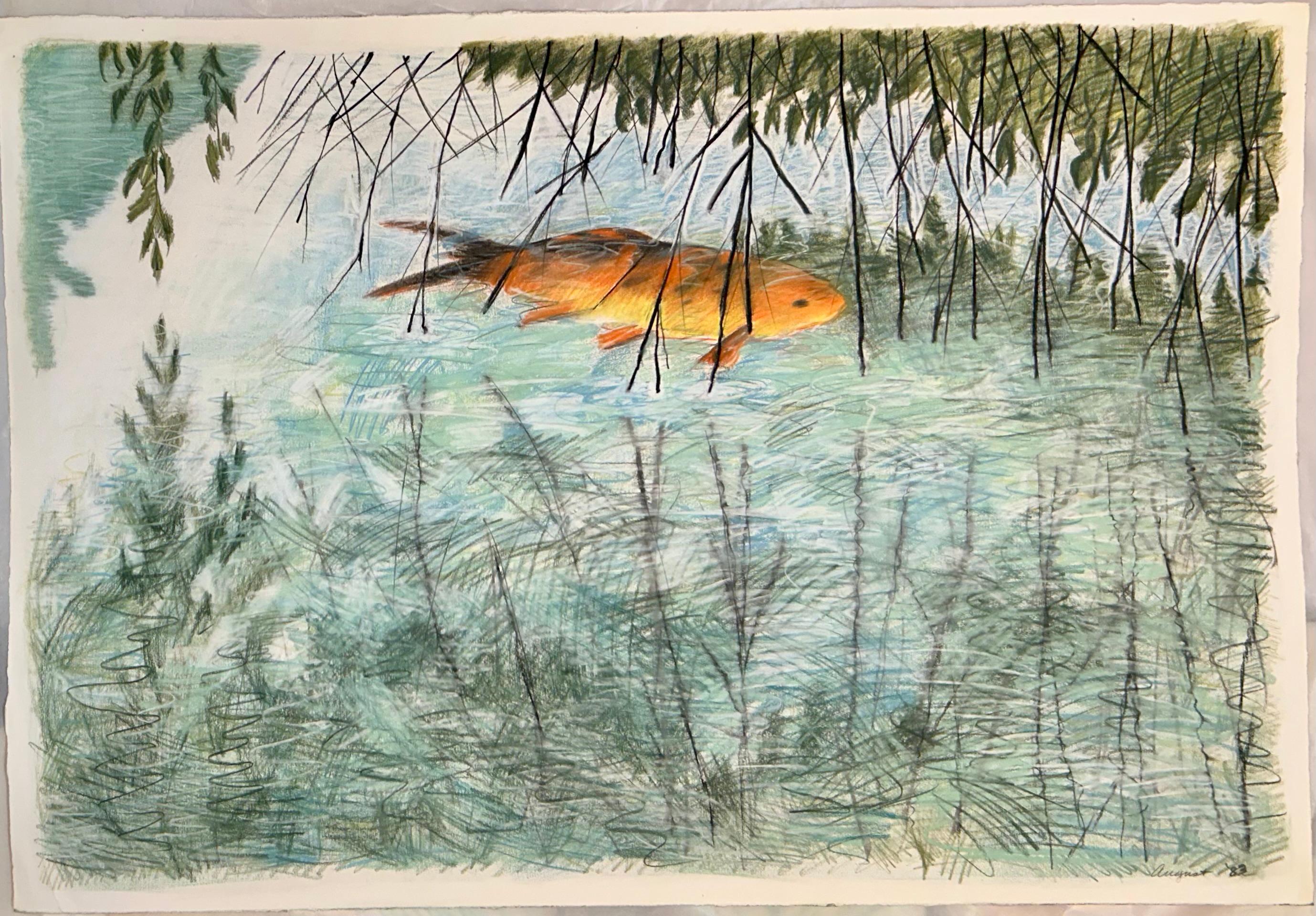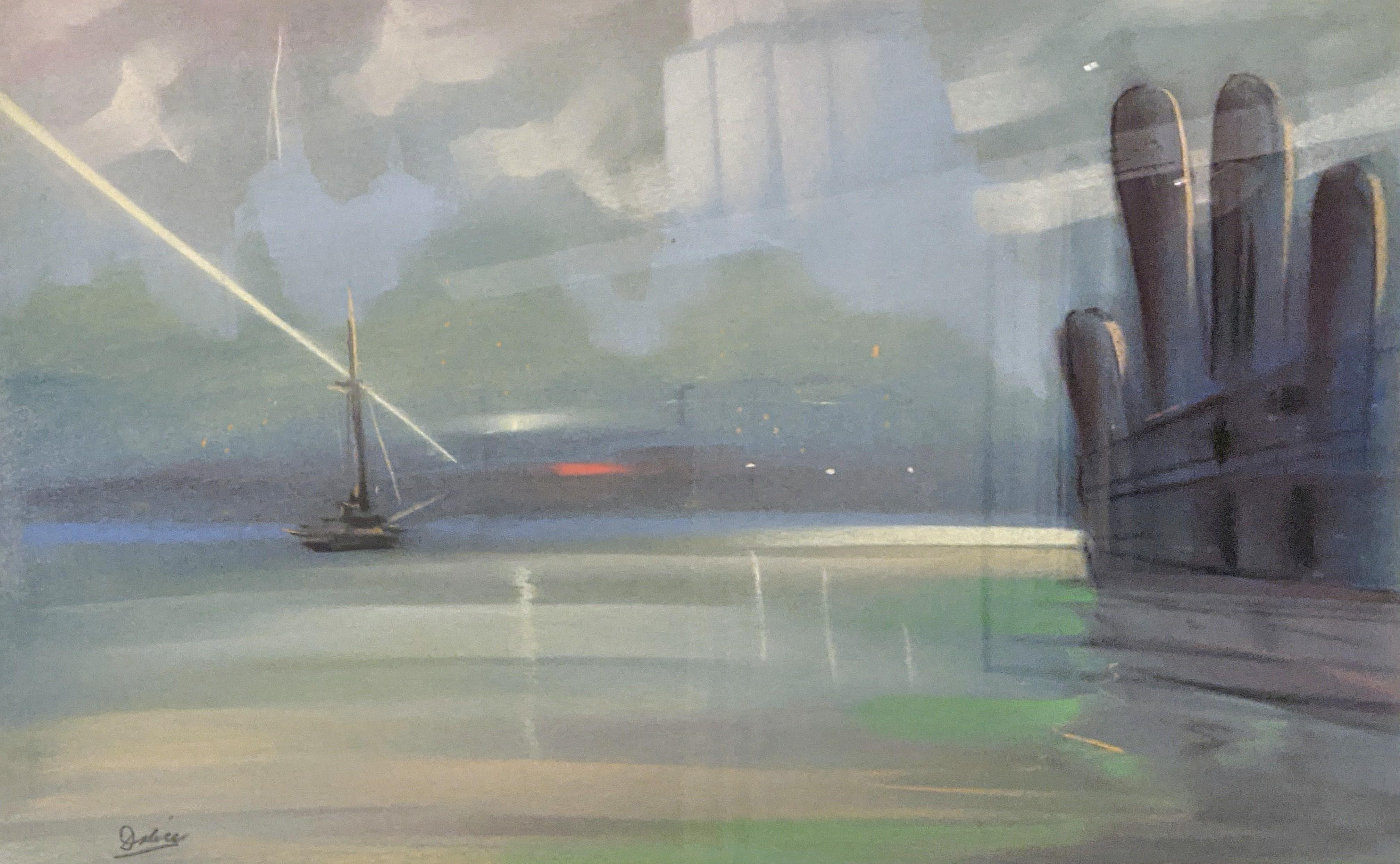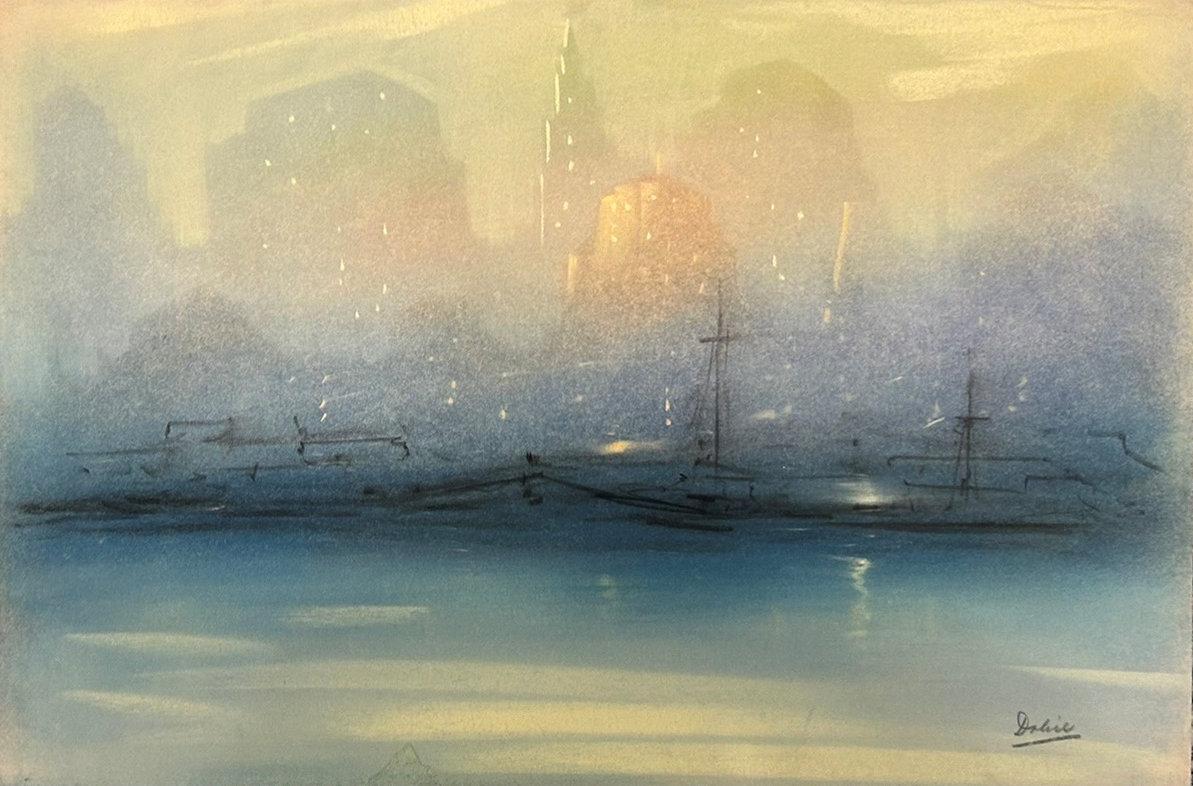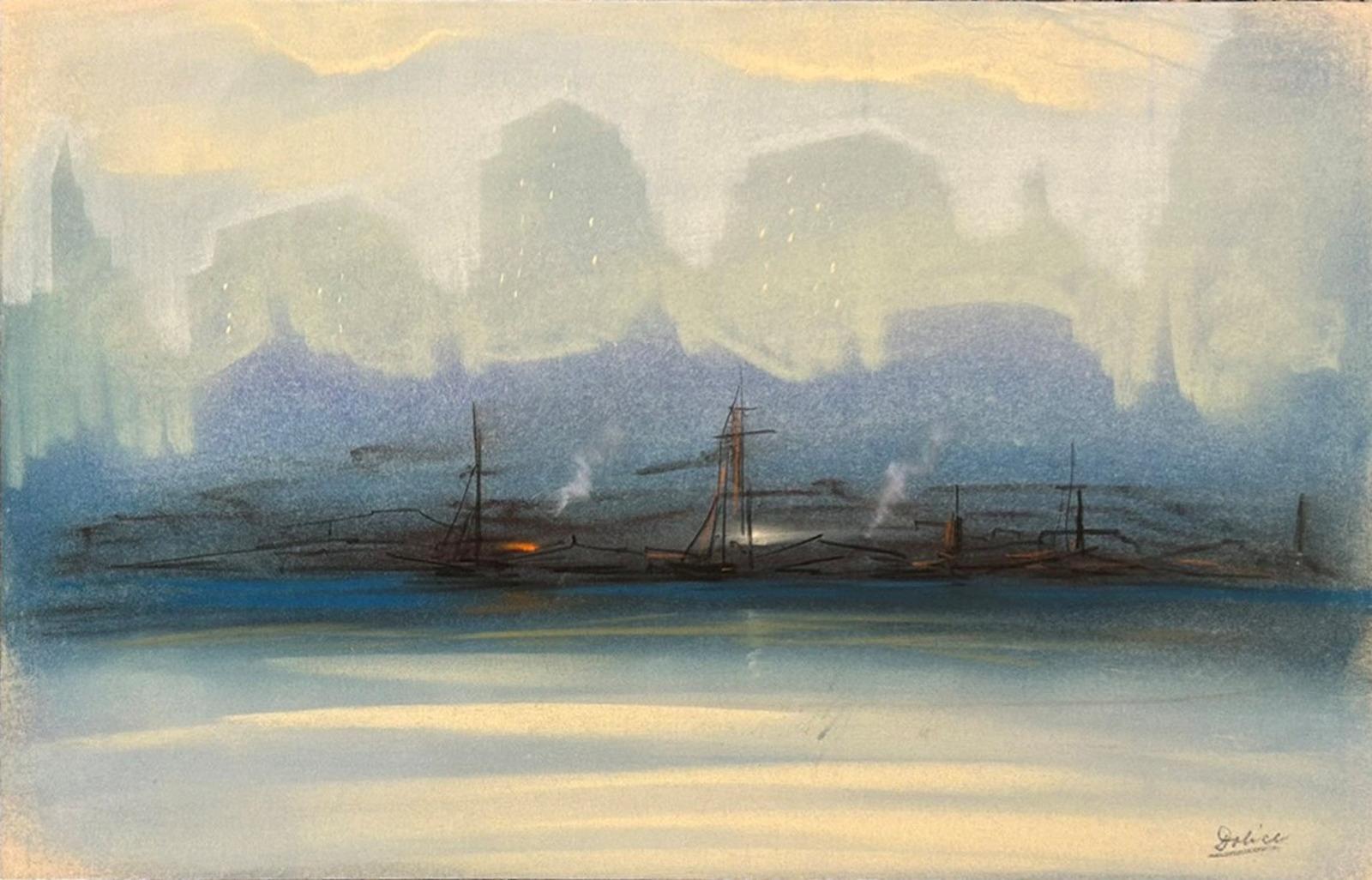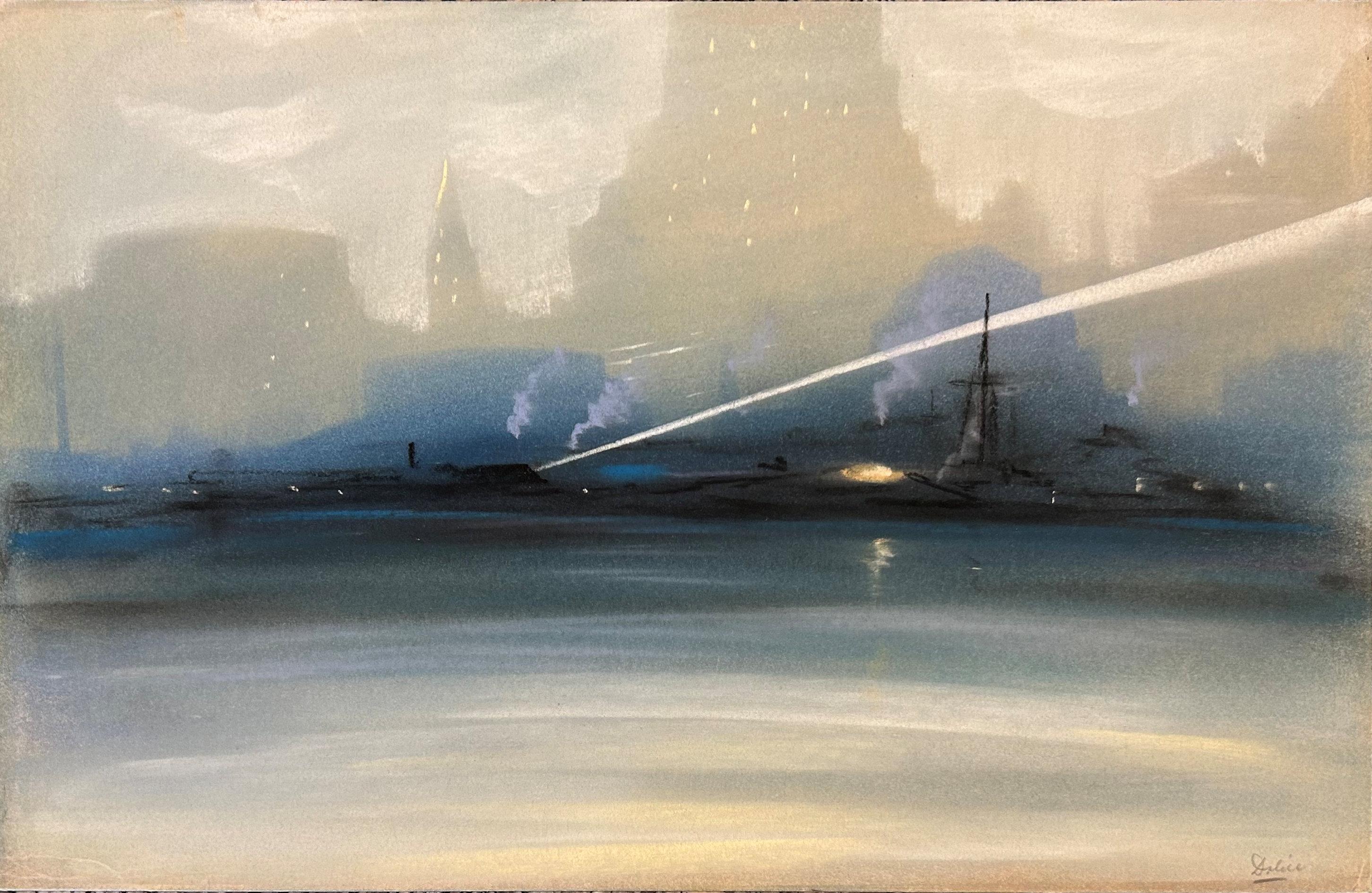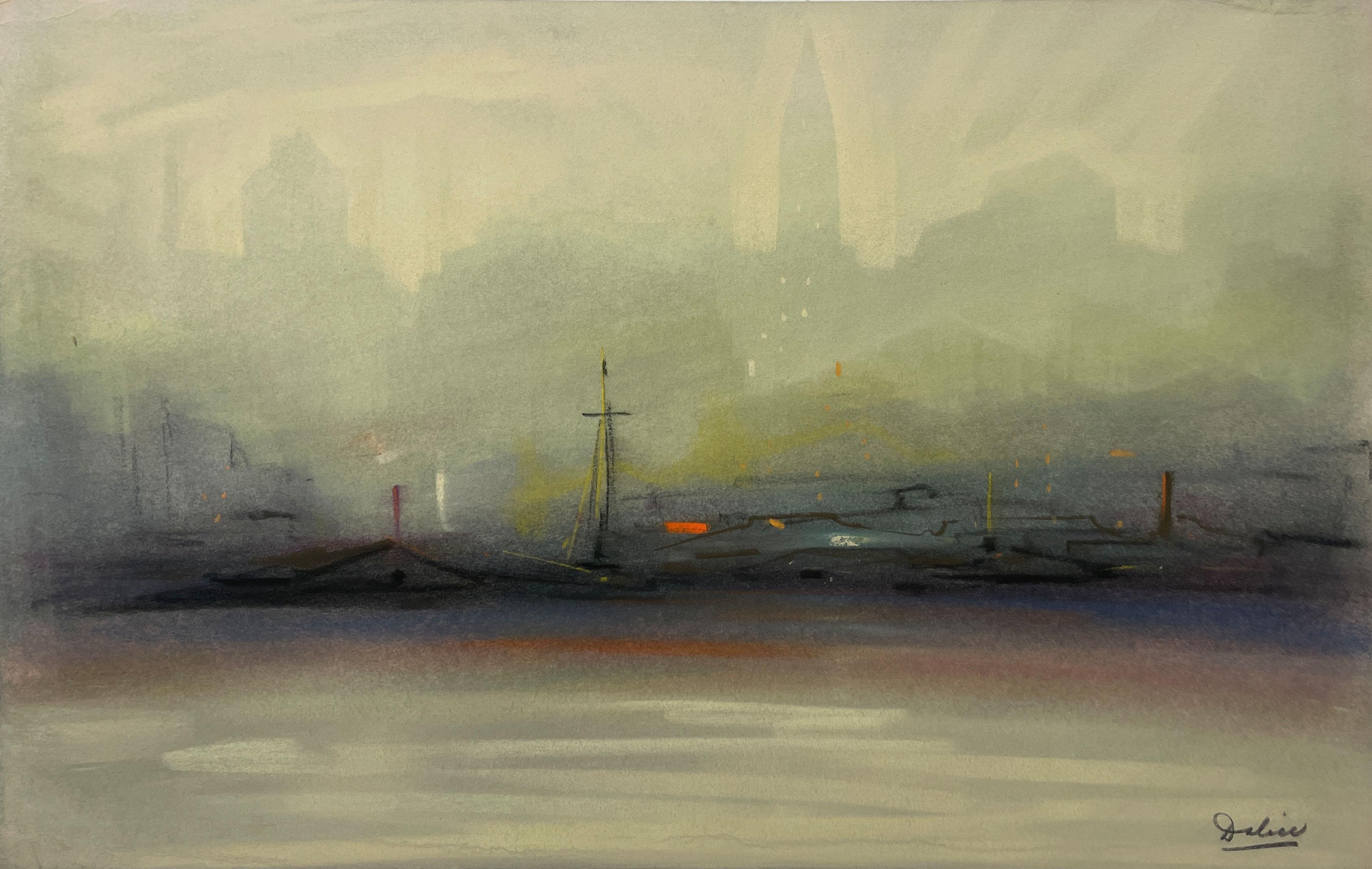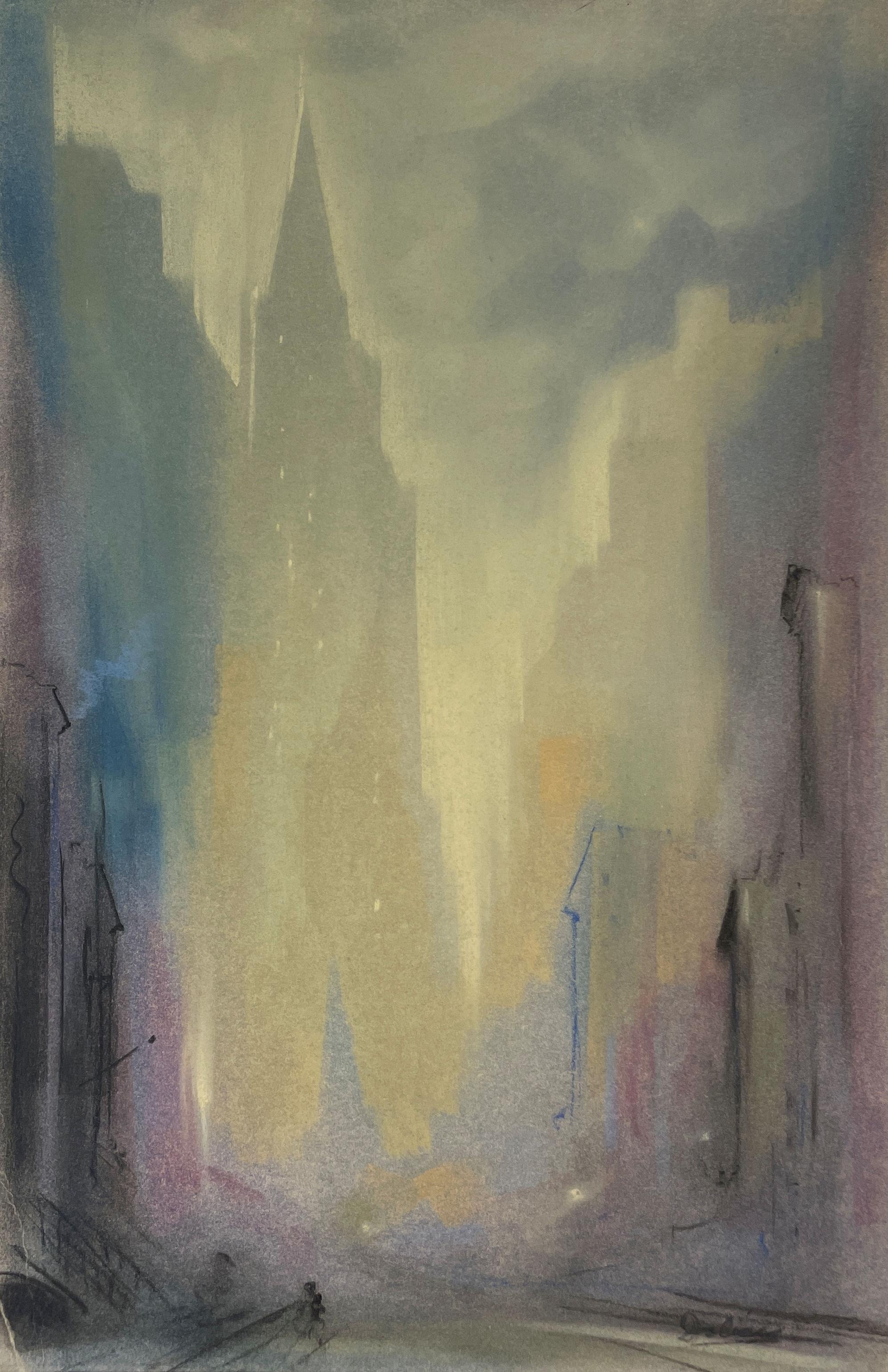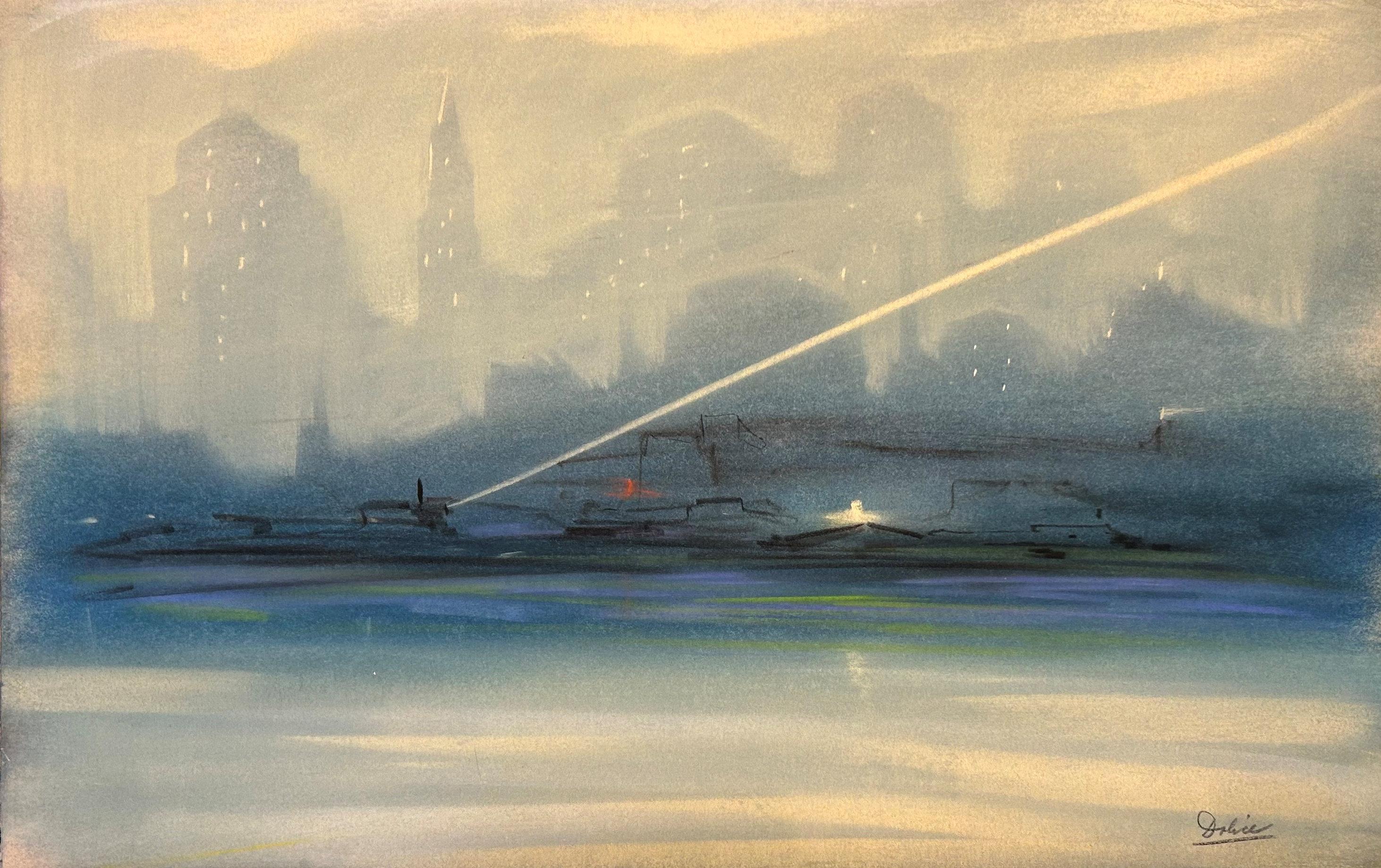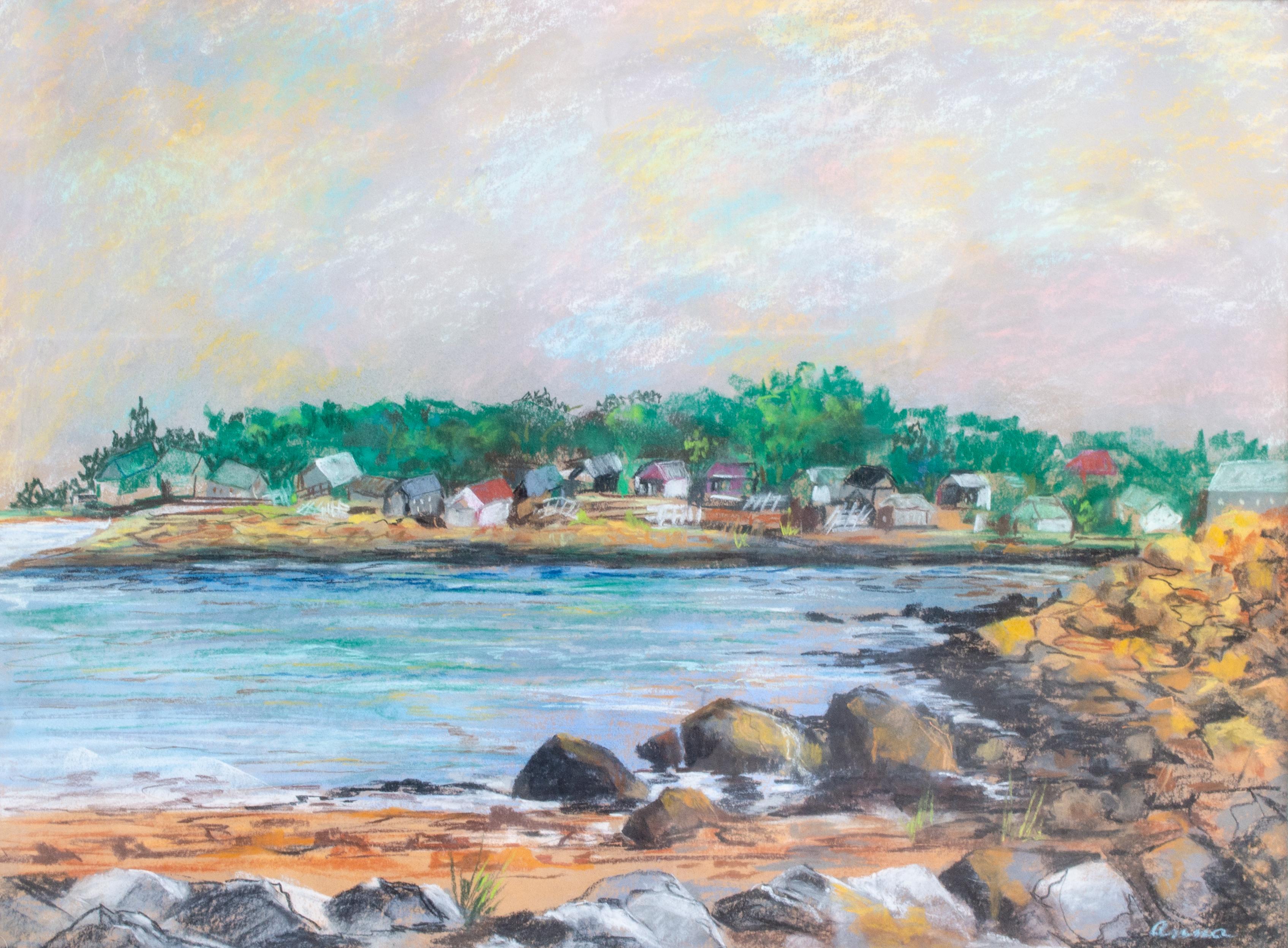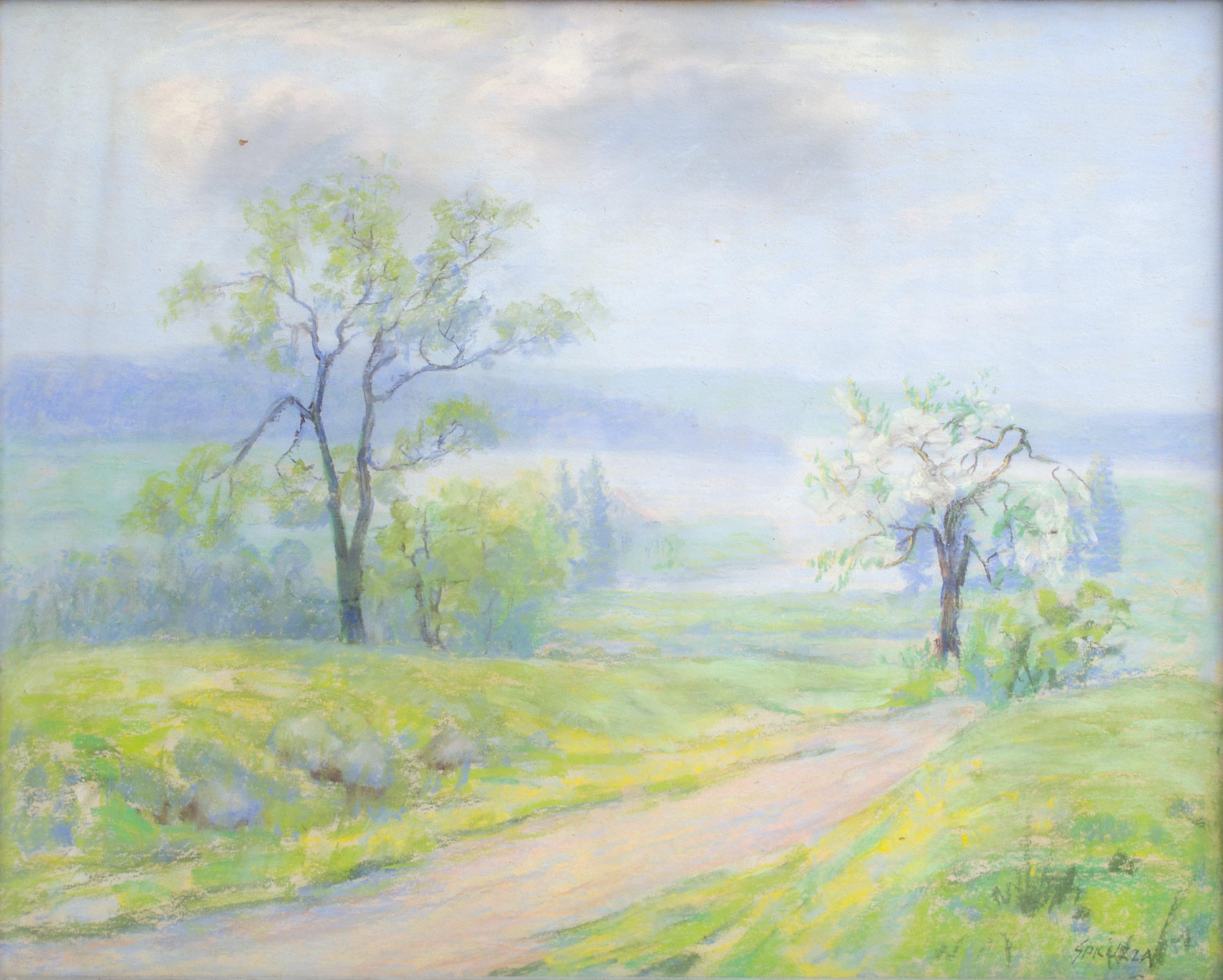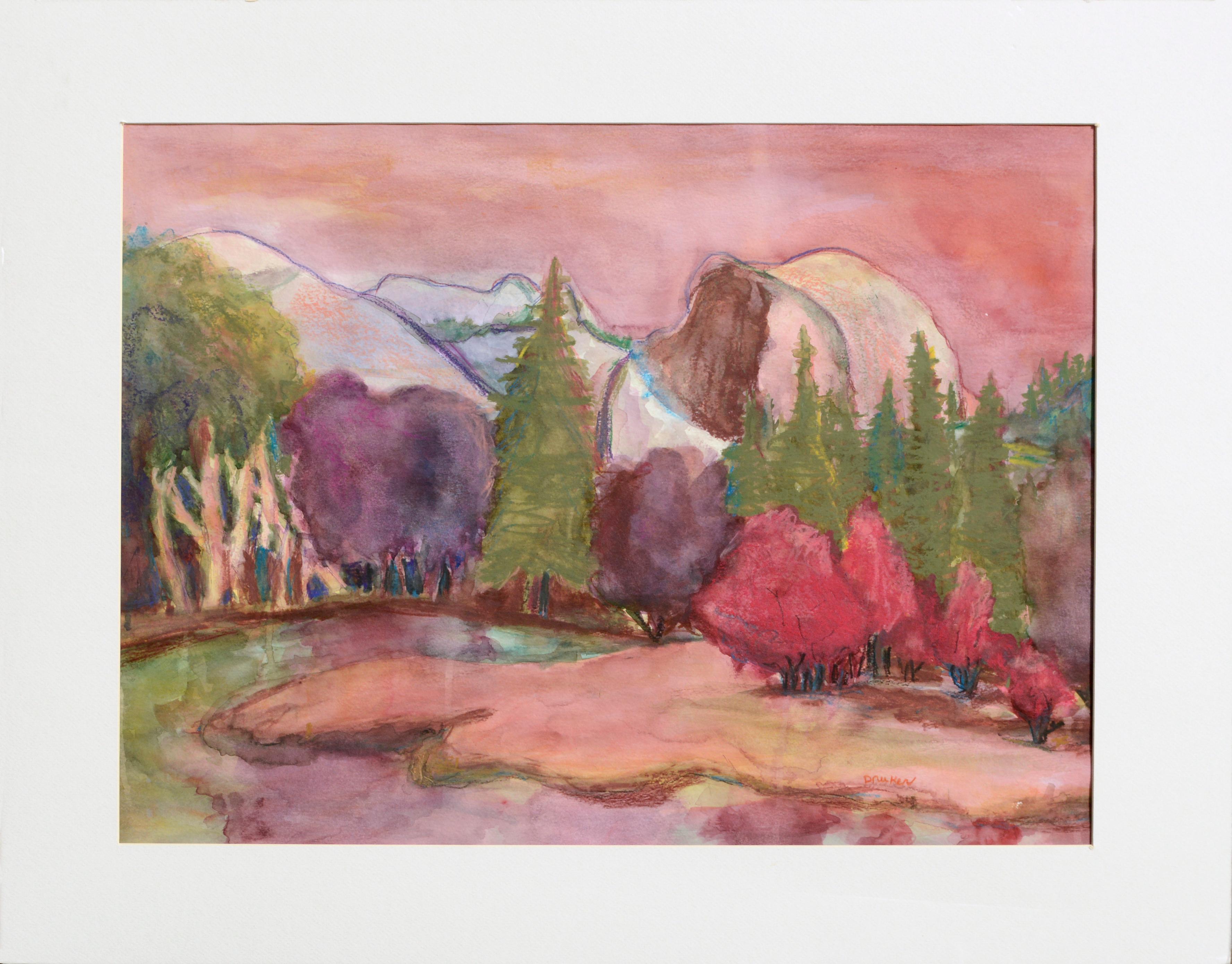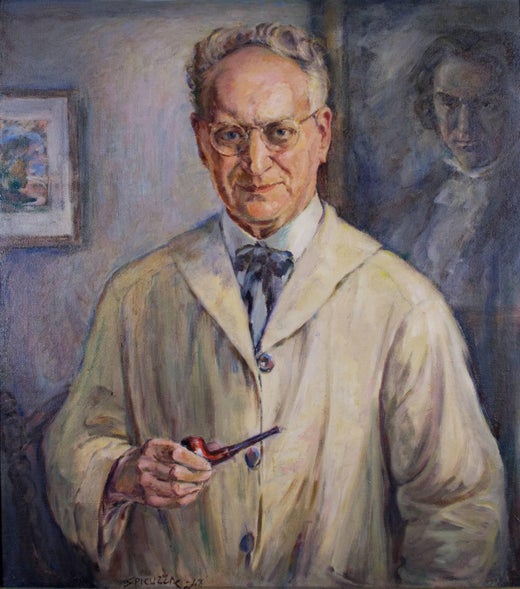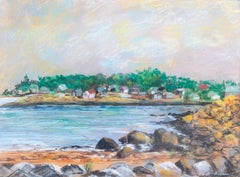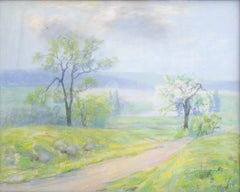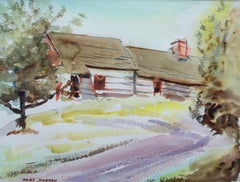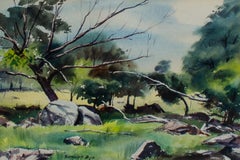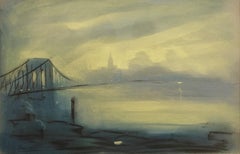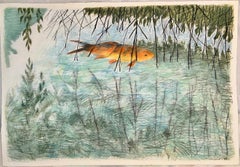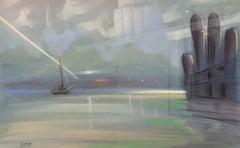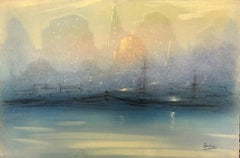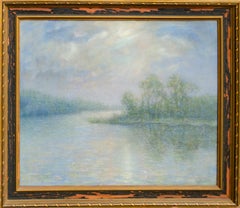
Lovely impressionist landscape in pastel by Francesco Spicuzza
View Similar Items
Want more images or videos?
Request additional images or videos from the seller
1 of 8
Francesco SpicuzzaLovely impressionist landscape in pastel by Francesco Spicuzza20th Century
20th Century
Price:$1,750
$2,500List Price
About the Item
- Creator:Francesco Spicuzza (1883 - 1962, Italian, American)
- Creation Year:20th Century
- Dimensions:Height: 30.75 in (78.11 cm)Width: 35.5 in (90.17 cm)Depth: 0.75 in (1.91 cm)
- Medium:
- Movement & Style:
- Period:
- Condition:Dirt in image is from outer glass, not on artwork.
- Gallery Location:New York, NY
- Reference Number:1stDibs: LU2211212093762
Francesco Spicuzza
Italian-born Francesco Spicuzza was primarily a Wisconsin painter who did portraits, still-lives and local landscapes. He spent the first part of his life in near-poverty to become a painter. An eternal optimist, in 1917, the artist reported: "I am happy and my only ambition now is to paint better and better until I shall have reached the measure of the best of which I am capable." (Spicuzza, 1917, p. 22). His predilection for beach scenes germinated early: reportedly, the five-year-old boy first drew the outlines of his father's fishing boat in the sand on the seashore near their home in Sicily. After setting himself up as a fruit peddler in Milwaukee, Spicuzza's father sent for his family when Francesco was eight years old. In 1899 or 1900, Spicuzza began studying drawing and anatomy under Robert Schade (1861-1912), a painter of panoramas who had been trained in Munich under Carl Theodor von Piloty. Spicuzza was also taught by Alexander Mueller (1872-1935), a product of the Weimar and Munich academies. The earliest influences in his work appear to be from Edward H. Potthast and Maurice Prendergast, though Spicuzza never mentioned either artist. Already in August 1910, Spicuzza was described in a newspaper as "one of the most talented of Milwaukee's rising workers." He undoubtedly received lasting inspiration from his one summer study period in 1911 with John F. Carlson at the Art Students League's Summer School in Woodstock, New York. Although he executed numerous still-lives and an occasional religious work, Spicuzza is best known for his Milwaukee beach scenes populated with frolicking bathers in multi-colored attire, not unlike the images of Potthast, who used a similar technique. These beach genre scenes reflect the attitude of American impressionists who depicted the more pleasant side of life. Spicuzza manipulated a successful balance of rich pigment applied in varying degrees of impasto texture with subtle nuances of hue. Working all'aperto, he sought "the soft enticing shades of yellow, blue, green, pink and lavender . . . to get the effects of bright glistening summer air." (L.E.S., n.d.). As a painter whose color not only derived from direct observation but also from a personal theory of color symbolism, Spicuzza traded the linear approach of lithography for dynamic patches of brilliant color. Like Prendergast, he would often tilt the angle of the picture plane to bring the viewer's position above the scene. Spicuzza spent a great deal of time painting en plein air and by 1925 he began summering at Big Cedar Lake, near West Bend, Wisconsin to gather his subject matter. During the difficult era of the Depression, patrons came to Spicuzza's aid and during the 40s, he taught housewives, businessmen and students at the Milwaukee Art Institute, the Milwaukee Art Center, and in his studio. In the following decade, although his kind of art was no longer popular in the "make-it-or-break-it" New York gallery world, Spicuzza enjoyed regular patronage and sales. Bio by Richard H. Love and Michael Preston Worley, Ph.D.
About the Seller
5.0
Platinum Seller
Premium sellers with a 4.7+ rating and 24-hour response times
1stDibs seller since 2022
80 sales on 1stDibs
Typical response time: 2 hours
Authenticity Guarantee
In the unlikely event there’s an issue with an item’s authenticity, contact us within 1 year for a full refund. DetailsMoney-Back Guarantee
If your item is not as described, is damaged in transit, or does not arrive, contact us within 7 days for a full refund. Details24-Hour Cancellation
You have a 24-hour grace period in which to reconsider your purchase, with no questions asked.Vetted Professional Sellers
Our world-class sellers must adhere to strict standards for service and quality, maintaining the integrity of our listings.Price-Match Guarantee
If you find that a seller listed the same item for a lower price elsewhere, we’ll match it.Trusted Global Delivery
Our best-in-class carrier network provides specialized shipping options worldwide, including custom delivery.More From This Seller
View AllLovely Impressionist Coastal Scene of New York in Pastel
Located in New York, NY
Untitled (Coastal New York)
Pastel on paper
17 1/2 x 23 1/2 in.
Framed: 24 1/2 x 30 in.
Signed lower right
Category
20th Century American Modern Landscape Drawings and Watercolors
Materials
Paper, Pastel
Beautiful large impressionist pastel by Francesco Spicuzza
By Francesco Spicuzza
Located in New York, NY
Francesco Spicuzza (American, 1883-1962)
Untitled Landscape, 20th century
Pastel on paper
Sight size: 24 x 30 in.
Framed: 26 1/4 x 32 3/8 in.
Signed lower right: Spicuzza
Italian-born Francesco Spicuzza was primarily a Wisconsin painter who did portraits, still-lives and local landscapes. He spent the first part of his life in near-poverty to become a painter. An eternal optimist, in 1917, the artist reported: "I am happy and my only ambition now is to paint better and better until I shall have reached the measure of the best of which I am capable." (Spicuzza, 1917, p. 22). His predilection for beach scenes germinated early: reportedly, the five-year-old boy first drew the outlines of his father's fishing boat in the sand on the seashore near their home in Sicily. After setting himself up as a fruit peddler in Milwaukee, Spicuzza's father sent for his family when Francesco was eight years old. For the following six years the boy was unable to attend school because of his job in his father's fruit and vegetable business. The poor lad suffered a caved-in shoulder from carrying a heavy wooden crate.
The young Spicuzza was aided by moral and financial support from a sympathetic Milwaukee businessman named John Cramer, publisher and editor of the Evening Wisconsin, who raised Spicuzza's salary as a newspaper assembler so that he could attend school. In 1899 or 1900, Spicuzza began studying drawing and anatomy under Robert Schade (1861-1912), a painter of panoramas who had been trained in Munich under Carl Theodor von Piloty. Spicuzza was also taught by Alexander Mueller (1872-1935), a product of the Weimar and Munich academies. Mueller realized Spicuzza was a colorist and encouraged that orientation (Madle, 1961). Spicuzza found it beneficial to accept an apprenticeship in a lithographic studio for $8 a week, which demanded most of his time. During the St. Louis Universal Exposition in 1904, still a struggling student, Spicuzza attended the fair, thanks to Cramer. It was not long before Spicuzza received a twenty-five dollar portrait commission, and this inaugural success led to new commissions and allowed him to continue as a painter.
The earliest influences in his work appear to be from Edward H. Potthast and Maurice Prendergast, though Spicuzza never mentioned either artist. Already in August 1910, Spicuzza was described in a newspaper as "one of the most talented of Milwaukee's rising workers." He undoubtedly received lasting inspiration from his one summer study period in 1911 with John F. Carlson at the Art Students League's Summer School in Woodstock, New York. Certainly Spicuzza would have picked up spontaneity in handling the brush from Carlson. Although he executed numerous still-lives and an occasional religious work, Spicuzza is best known for his Milwaukee beach scenes populated with frolicking bathers in multi-colored attire, not unlike the images of Potthast, who used a similar technique. Many of these are small, preparatory works on canvas board executed between 1910 and 1915. Frequently with even greater animation than Potthast, Spicuzza produced moving images of youthful energy and uninhibited child's play. These beach genre scenes reflect the attitude of American impressionists who depicted the more pleasant side of life.
Spicuzza manipulated a successful balance of rich pigment applied in varying degrees of impasto texture with subtle nuances of hue. Working all'aperto, he sought "the soft enticing shades of yellow, blue, green, pink and lavender . . . to get the effects of bright glistening summer air." (L.E.S., n.d.). As a painter whose color not only derived from direct observation but also from a personal theory of color symbolism, Spicuzza traded the linear approach of lithography for dynamic patches of brilliant color. Like Prendergast, he would often tilt the angle of the picture plane to bring the viewer's position above the scene.
Spicuzza was unable to enter the 1913 Armory Show or the Panama-Pacific International Exposition two years later but he did submit work to the annual exhibitions of the Pennsylvania Academy of the Fine Arts and those of the Art Institute of Chicago. His first important award was the bronze medal presented by the St. Paul Institute in 1913, which was followed by the silver medal two years later. Before long, Spicuzza had acquired a greater sense of security in his profession and was described by a writer in International Studio (April 1917) as "an independent artist with an assured future. His pastels and water-colours are poetic and joyous bits of nature with a genuine out-of-door feeling." In 1918, his Spirit of Youth, exhibited at the National Academy of Design, sold for $112.50. Four years later, the artist achieved his greatest local recognition by winning the gold medal from the Milwaukee Art Institute.
Spicuzza spent a great deal of time painting en plein air and by 1925 he began summering at Big Cedar Lake, near West Bend, Wisconsin to gather his subject matter. Easter Morning (1926) owes something to the Symbolist movement, with its figure of Christ appearing over a seascape. During the difficult era of the Depression, patrons came to Spicuzza's aid and during the 40s, he taught housewives, businessmen and students at the Milwaukee Art Institute, the Milwaukee Art Center, and in his private studio. In the following decade, although his kind of art was no longer popular in the "make-it-or-break-it" New York gallery world, Spicuzza enjoyed regular patronage and sales. His beach scenes became more static and he would experiment with modernist techniques. Spicuzza died at the age of seventy-eight.
Sources:
L.E.S., "Do Colors Change a Person's disposition? Experiments of a Milwaukee Artist...
Category
20th Century American Modern Landscape Drawings and Watercolors
Materials
Paper, Pastel
4 American Watercolors, c. 1950s, by Mary M. Johnsen
Located in New York, NY
Mary M. Johnsen
Four Paintings, c. 1950s
Watercolor
Dimensions:
1. Mat: 18 x 21 1/4 in., page: 8 x 12 1/4 in.
2. Page: 14 7/8 x 22 in.
3. Mat: 15 x 19 in., page: 10 1/2 x 14 1/2 in....
Category
1950s American Modern Landscape Drawings and Watercolors
Materials
Paper, Watercolor
Watercolor of Doylestown, PA by Ranulph Bye
Located in New York, NY
Ranulph Bye (American, 1916-2003)
Rocks and Trees (Doylestown, PA), 1958
Watercolor on paper
14 x 21 in.
Framed: 23 1/8 x 30 1/4 in.
Signed bottom: Ranulph...
Category
1950s American Modern Landscape Drawings and Watercolors
Materials
Watercolor, Paper
Charles Burchfield Preparatory Sketch, Early 20th Century
By Charles E. Burchfield
Located in New York, NY
Charles Burchfield (1893-1967)
Untitled (Preparatory Drawing for Skyscape), Early 20th Century
Pencil on paper
12 1/4 x 18 3/4 in.
Inscribed: blue / white / blue / RV
Born in Ashtab...
Category
Early 20th Century American Modern Landscape Drawings and Watercolors
Materials
Paper, Pencil
Vibrant German Watercolor of a Mill, 19th Century
Located in New York, NY
Untitled (Mill), 19th Century
Watercolor on paper
5 x 7 in.
Mat: 8 x 10 in.
Partial inscription verso
Category
19th Century Impressionist Landscape Drawings and Watercolors
Materials
Paper, Watercolor
You May Also Like
"New York Harbor (Brooklyn Bridge)" Leon Dolice, Mid-Century New York Nocturne
By Leon Dolice
Located in New York, NY
Leon Dolice
New York Harbor (Brooklyn Bridge), circa 1939-1940
Signed lower left
Pastel on paper
12 x 19 inches
Exhibited
Roslyn Harbor, New York, Nassau County Museum of Art, Deco ...
Category
1930s American Modern Figurative Drawings and Watercolors
Materials
Paper, Pastel
Koi, golden fish, pastel drawing water, nature, abstract reflection
By Audrey Anastasi
Located in Brooklyn, NY
These recently discovered 1983-84 oversize pastels on archival papers were created working quickly, in pastel. The series shows the last existing obs...
Category
2010s American Modern Animal Drawings and Watercolors
Materials
Pastel, Mixed Media, Archival Paper
"New York City Harbor" Leon Dolice, Downtown Skyline, East and Hudson River
By Leon Dolice
Located in New York, NY
Leon Dolice (1892 - 1960)
New York Harbor Skyline at Twilight (Searching), circa 1930-40
Pastel on paper
12 x 19 inches
Signed lower left
Provenance:
Spanierman Gallery, New York
The romantic backdrop of Vienna at the turn of the century had a life-long influence upon the young man who was someday to be spoken of as showing promise of becoming "one of the greatest etchers of all time". Leon Dolice, born in Vienna on August 14, 1892, even as a young boy, preferred the lure of painting to the scholastic studies which his early years had expected of him. His father was a machinist, which exposed the boy to welding and metal crafts.
However, his interest in art led him to abandon a secure future in the family business, and he spent most of his late teens and early twenties traveling through the capital cities of Europe studying the works of the Masters.
As with many itinerant artists, he made his way in a variety of fashions metalworker, chef, designer somehow always managing to give vent to his creative instincts. Lured by the adventure of crossing the great Atlantic and by the freedoms of the New World, he came to America in 1920. There he was greeted by the turbulence of New York in the Roaring Twenties. Finding a retreat in the European Bohemianism of Greenwich Village, he picked the streets of this landmark neighborhood as his first subjects.
With the encouragement of new found friends and artists such as George Luks and Herb Roth, he soon ventured out and devoted all his time to chronicling the architecture, back streets, dock scenes and other nostalgia that was fast disappearing from the face of Manhattan, mainly in copperplate etchings. A favorite subject for him was the Third Avenue El near one of his New York City studios on Third Avenue. He won accolades for his work, and although he traveled the East Coast recording landmarks in other cities including Washington DC, Baltimore, Chicago and Philadelphia, he always returned to his new home Manhattan.
A decline in popular favor for etchings led him to put aside his plates in the late 1930's and devote some ten years to pastels, linocuts and painting. His subject matter was almost exclusively New York City street scenes, but figurative works, country scenes and even experiments with Abstract Expressionism at the height of its new found favor in the 1940's punctuated his career.
In 1953, after learning of the forthcoming demise of the Third Avenue El, in the shadow of which he had maintained his studio for over a decade, he once again took to his plates and press and created a final series of Third Avenue and or other New York City landmarks that were then threatened with extinction. His work brings to light aspects of nostalgic New York that survives today only in small part, whether in architecture or in spirit.
Dolice's works are in a number of notable museums and private collections, including the Museum of the City of New York; The New York Public Library Print Collection; The New York Historical Society; Georgetown University Lauinger Library; The Print Club of Philadelphia and others. In the past few years, his work has been exhibited at Hofstra Museum, Long Island, NY; with the Montauk...
Category
1930s American Modern Landscape Drawings and Watercolors
Materials
Paper, Pastel
"New York Harbor Nocturne" Leon Dolice, Mid-Century New York Nocturnal Landscape
By Leon Dolice
Located in New York, NY
Leon Dolice
New York Harbor Nocturne
Signed lower right
Pastel on paper
12 x 19 inches
The romantic backdrop of Vienna at the turn of the century had a life-long influence upon the...
Category
1930s American Modern Landscape Drawings and Watercolors
Materials
Paper, Pastel
"New York Harbor Nocturne" Leon Dolice, Mid-Century New York Nocturnal Landscape
By Leon Dolice
Located in New York, NY
Leon Dolice
New York Harbor Nocturne, circa 1930-40
Signed lower right
Pastel on paper
12 x 19 inches
The romantic backdrop of Vienna at the turn of the century had a life-long inf...
Category
1930s American Modern Figurative Drawings and Watercolors
Materials
Paper, Pastel
"New York Harbor Nocturne" Leon Dolice, Mid-Century New York Nocturnal Landscape
By Leon Dolice
Located in New York, NY
Leon Dolice
New York Harbor Nocturne
Signed lower right
Pastel on paper
12 x 19 inches
The romantic backdrop of Vienna at the turn of the century had a life-long influence upon the...
Category
1930s American Modern Figurative Drawings and Watercolors
Materials
Paper, Pastel
